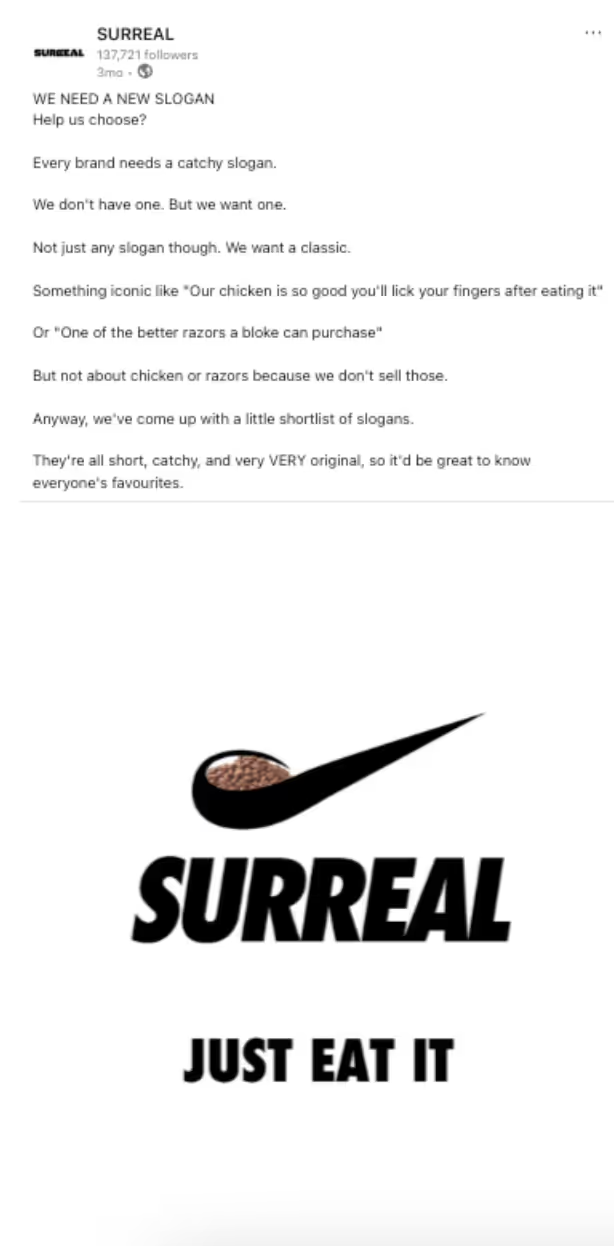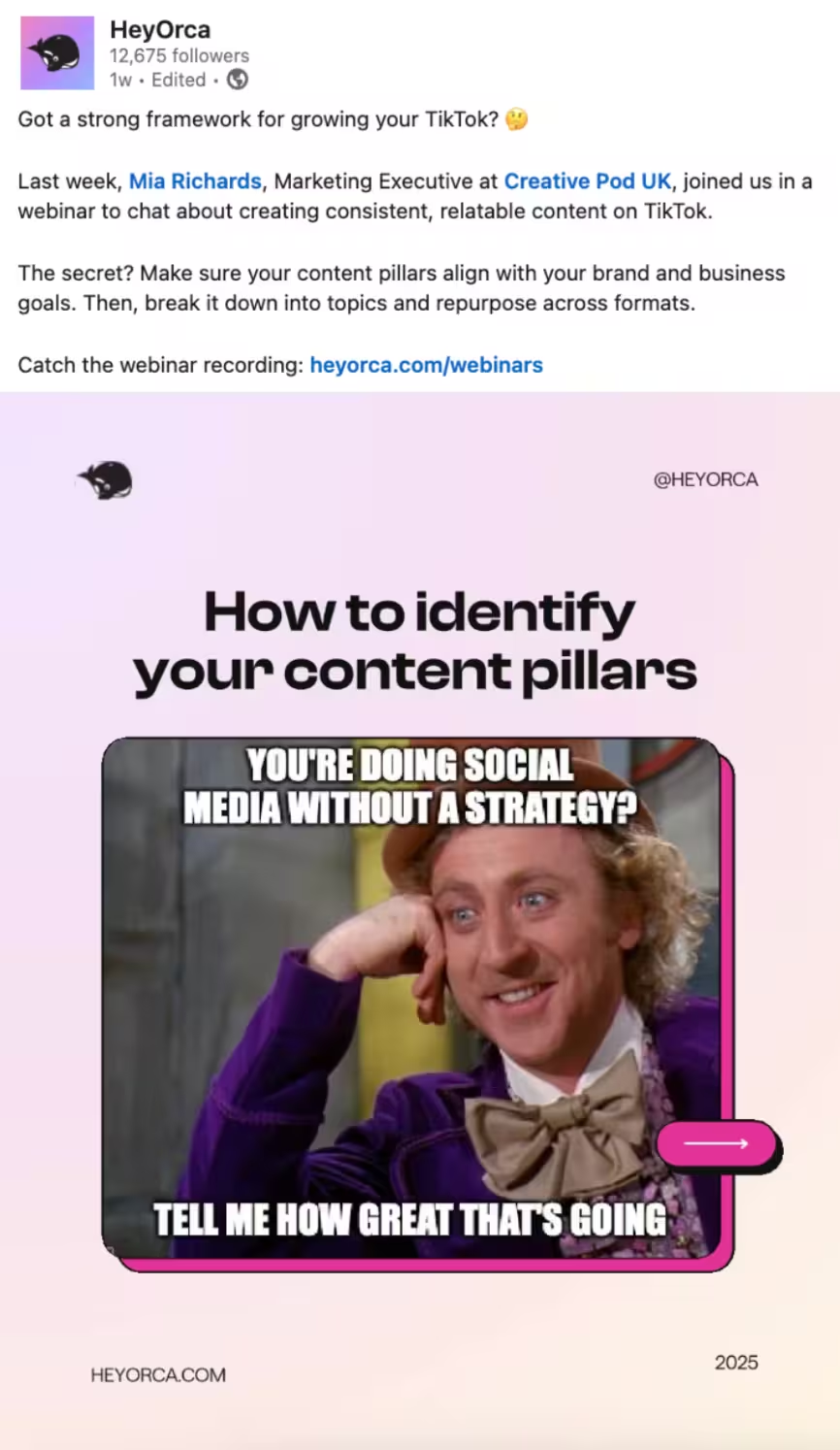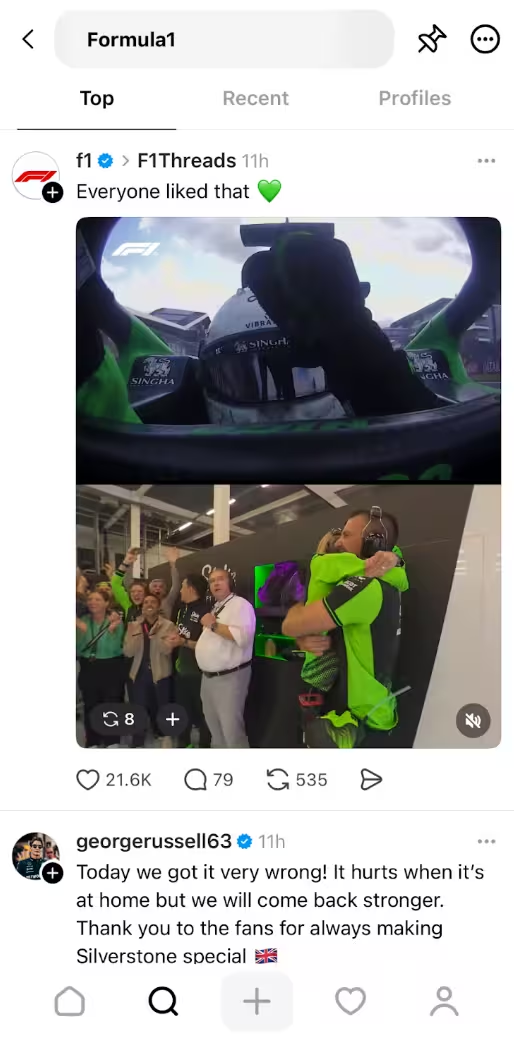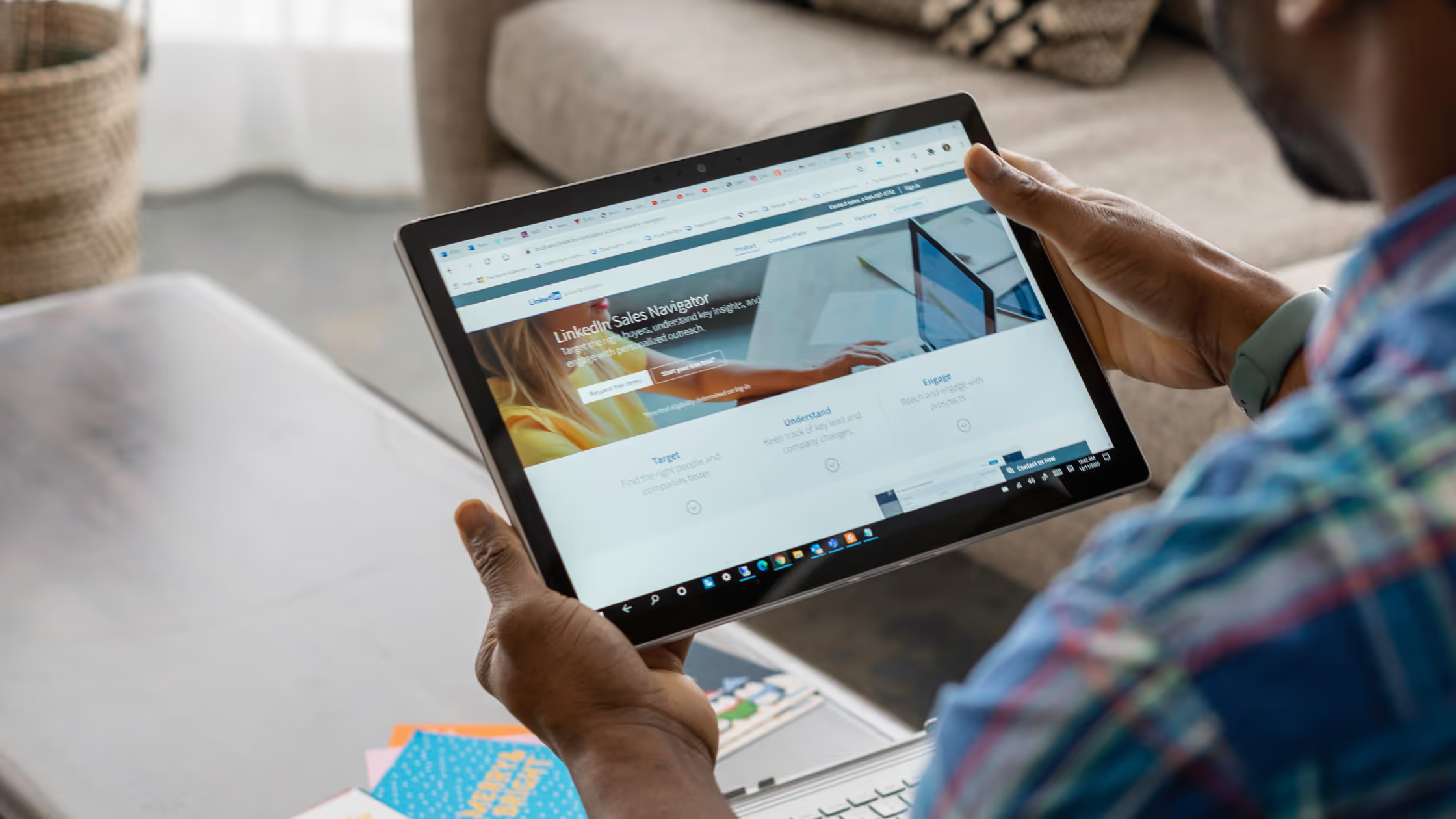Here is part two of our social media breakdown. We’re focusing on the more conversational and community-driven platforms, Facebook, LinkedIn, X (formerly Twitter), Bluesky, and Threads.
We’ll cover who’s using them, how brands are showing up, and what kind of content performs best, so you can decide which platforms are worth your time and align best with your audience and goals.
Building brand loyalty through community
What is Facebook?
Facebook is a social media platform designed initially for connecting friends and family, but today it's a vital marketing tool for brands looking to build an online presence, foster community, and share engaging content. Businesses can use Facebook to publish photos, videos, articles, and updates, as well as host events and join or create niche community groups. It remains one of the most versatile platforms in terms of features and audience reach.
Who’s using it?
While Facebook has seen a steady decline in popularity among younger audiences, many now favour platforms like Instagram, TikTok, and X, as it still boasts a massive global user base. Facebook remains particularly strong with users aged 35 and above, making it an ideal platform for targeting older Millennials, Gen X, and Baby Boomers.
For businesses targeting homeowners, parents, professionals, or local communities, Facebook can be very effective.
How are brands using Facebook?
Facebook is ideal for brands looking to nurture long-term relationships and provide value through content. Key marketing strategies include:
- Content: Sharing a mix of educational, entertaining, and promotional content such as blog links, videos, infographics, and product updates.
- Community engagement: Using comments, reactions, and shares to spark conversation, build trust, and create dialogue with customers.
- Facebook events: Promoting launches, sales, webinars, or in-person events to drive awareness and participation.
- Groups: Creating or participating in niche Facebook groups to connect with audiences around shared interests or industries.
A brilliant example of a brand using Facebook effectively is Innocent Drinks (@innocent.drinks). Innocent shares light-hearted, personable posts that reflect the tone of their brand while remaining highly relevant to their audience’s lifestyle and interests.
One of their most powerful strategies is the use of user-generated content (UGC). UGC refers to any content, photos, videos, reviews, or testimonials created by real customers or fans rather than the brand itself. On Facebook, this works especially well because it can add authenticity to your content, increase engagement, and build trust, as recommendations from other consumers are often more impactful than traditional advertising.

Is Facebook right for your business?
If your target demographic includes users aged 30+, and your brand values community engagement, customer relationships, and storytelling, then Facebook could definitely be a platform worth investing in.
B2B marketing and professional brand building
LinkedIn is a great networking platform for professionals, businesses, and industry leaders. Initially created for job seekers and recruiters, LinkedIn has evolved into a powerful space for professional networking, thought leadership, and B2B marketing.
Users build profiles that showcase their work experience, skills, and achievements. At the same time, businesses use the platform to promote company culture, share industry insights, and position themselves as experts in their field.
Who’s using it?
LinkedIn’s core audience consists of professionals aged 25–34, including decision-makers, managers, executives, and business owners. The platform is ideal for B2B businesses or service providers looking to reach industry-specific audiences, make connections, or recruit talent.
If your goal is to target professionals by job title, company, seniority, or industry, LinkedIn has very precise targeting capabilities, especially through paid advertising.
How are brands using LinkedIn?
For businesses, LinkedIn is a great platform to build brand authority, increase visibility among professionals, and demonstrate value. Here's how brands are successfully using the platform:
LinkedIn supports a range of content formats to help businesses communicate effectively and build trust. Brands regularly share text updates, photos, and videos to bring their stories to life, while features like polls offer a great way to spark conversations and gather valuable audience feedback. It’s also a popular space for behind-the-scenes glimpses into company culture, whether that’s celebrating team achievements, announcing milestones, or offering a look at daily operations, all of which help humanise the brand and make it more relatable.
Long-form content also performs well on LinkedIn. Whether you're sharing a blog post, whitepaper, industry insight, or a downloadable PDF, educational, thought-provoking content. You can even post long-form written content as a LinkedIn newsletter. Businesses that consistently provide value tend to build stronger professional communities and position themselves as trusted voices within their sector.
Surreal is a brand that takes a playful and humorous approach to B2B marketing. Their posts are fun, cleverly written, and still highly relevant to their brand. It shows that you can be light-hearted on LinkedIn, as long as you know your audience and stay strategic with your tone.
Their content proves that even on a business-first platform, creativity cuts through. They use LinkedIn not just to promote their product but to build a memorable brand voice that’s talked about; this is one brand that regularly comes up in Creative Pods marketing meetings.

Is LinkedIn right for your business?
If you’re a B2B brand, service provider, or looking to grow authority within your industry, LinkedIn should be a key part of your strategy. It’s particularly effective for positioning your team as experts or thought leaders, showcasing company culture, and sharing educational content that adds value.

X (Formerly Twitter)
The world of social media has seen significant shifts over the past few years, particularly when it comes to platforms focused on conversation, commentary, and real-time reactions.
Once a dominant force in this space, Twitter, now rebranded as X, has undergone a significant transformation. Since Elon Musk acquired the platform in October 2022, the platform has been reshaped with the aim of becoming an “everything app,” combining messaging, payments, and content creation in one space.
Despite reports of declining user satisfaction and growing competition, X still maintains a vast user base, with around 600 million monthly active users. It continues to play a key role in industries like media, tech, and B2B, where real-time updates and thought leadership remain essential. Brands use X for live event coverage, breaking news, customer service, and participating in trending conversations. While the tone and trust in the platform may have shifted, it still offers value, particularly for those wanting to stay part of global conversations as they unfold.
In response to the changing nature of X, alternatives have emerged, like Bluesky and Threads, and it’s understandable that brands might feel unsure where to focus their attention.
Bluesky
Bluesky positions itself as a platform that prioritises user control, transparency, and customisation. Its primary users are aged 25–34, a lot of journalists, media professionals, and creatives who value more open and controlled digital spaces gravitate towards this space. So for brands that want to engage with progressive, early-adopter audiences or align with media-driven conversations, this may be a good platform to try.
Threads
Threads, on the other hand, is Meta’s response to X, tightly integrated with Instagram. It launched with a massive initial user base and continues to attract younger demographics like Gen Z and Millennials. What makes Threads particularly appealing to marketers is its potential reach, thanks to the built-in Instagram connection, and its simplicity.
Users post text, images, and videos in a familiar feed format, and many brands have started using it as an extension of their Instagram voice. It’s already gaining traction as a place to share informal updates, and engage in lighter discussions.

Still, need help figuring out which platforms might work for you? Contact us today, and we would be happy to help work through your social strategy! https://www.creativepod.uk.com/



















